Photos courtesy Brian Dey
Greetings, produce professionals, and welcome to the produce department!
As the calendar moves through May and now almost into June – how did that happen? – we are diving headlong into another stone fruit season. I know, I know, those words can bring up two different reactions among many a produce staff. I have found over the years that you either love stone fruit season or you hate it.
Some might look at the extra labor and care that stone fruit season requires in receiving, storing and merchandising – and also the potential for added shrink – as a nuisance. Others, like myself, are super stoked when those first peaches start to roll in as they are a clear indicator that spring is here and summer is not too far behind!
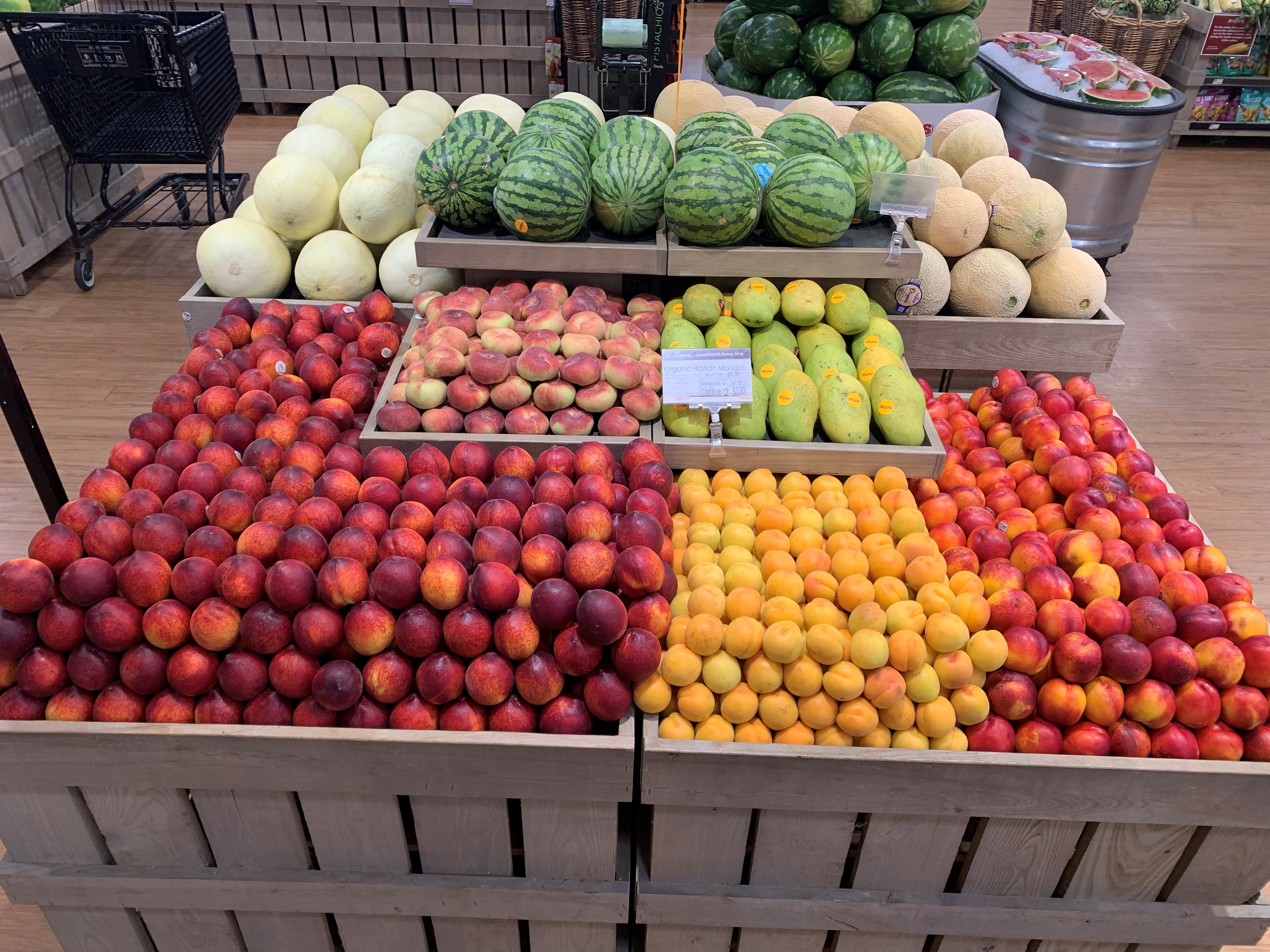
Stone fruit gets its name from, well, having a pit (also called a “stone”) in its core. Peaches, nectarines, plums, apricots and pluots are all considered stone fruit. Some also include cherries in this category, but with the different processes and temperatures that cherries require, I am going to leave that them to another column, so stay tuned to PMG for some upcoming cherry fun.
The smell of a fresh, ripe peach is truly intoxicating. That sweet aroma simply entices consumers to buy as they catch a whiff of the fragrant fruit when they walk into the department. Being full, fresh and ready with great displays and some added attention to receiving and storage will set you up for a successful stone fruit season.
Storage
People have a variety of opinions on stone fruit storage. Should I keep fruit in the cooler, or should I keep it outside of the cooler, in an area closer to room temperature? In my experience, stone fruit does best when stored outside of refrigeration.
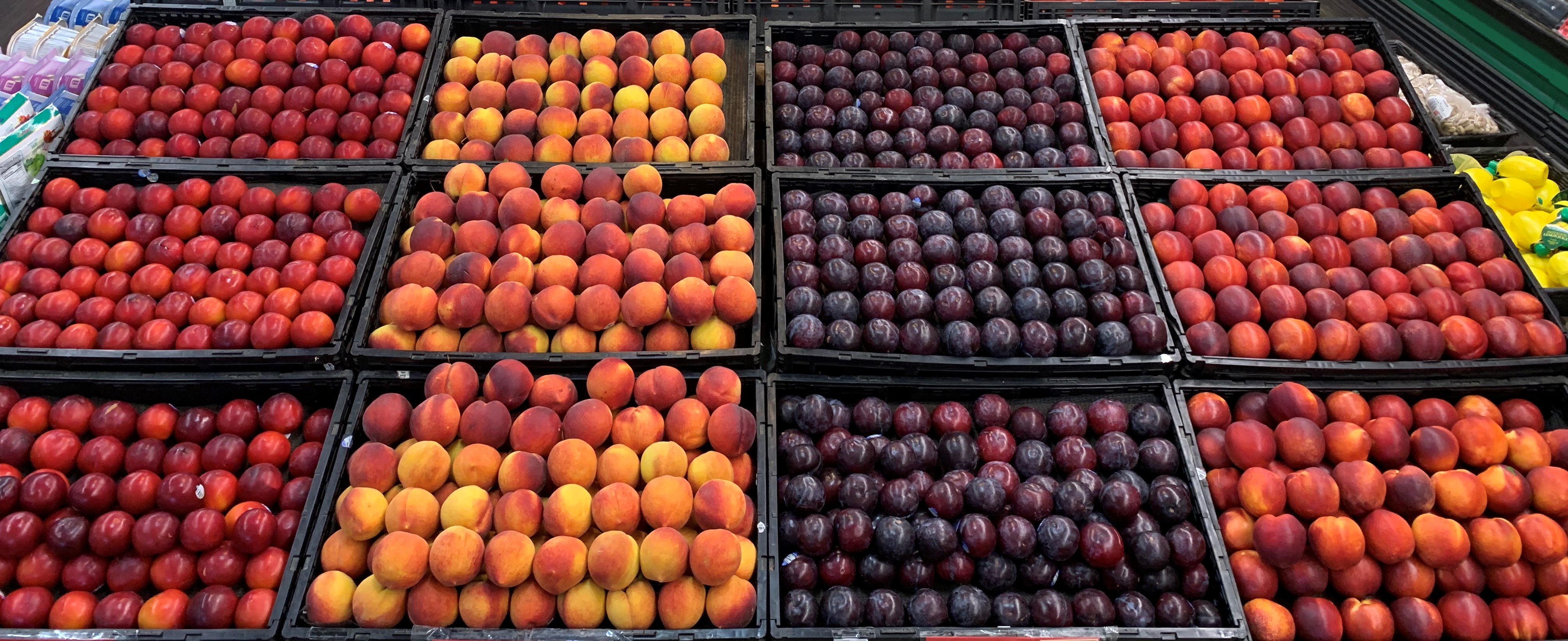
Research shows that stone fruit has what is called a “kill zone” – 36 to 50 degrees Fahrenheit. Exposure to that temperature range can result in flavor loss, mealy texture and flesh breakdown, all leading to a poor eating experience for the customer as well as extra shrink for you.
Stone fruit is also one of those commodities that does not follow the first in, first out rule – also known as FIFO – so as you are breaking down your loads remember to store the ripest fruit on top.
If you absolutely need to store in a cooler, do so for only a short period of time, and avoid going back and forth between cooler and dry storage.
Peach packout
You should also think about temperature when planning your merchandising. Merchandising on tables or dry racks – not in your coolers – is the best path to maximizing your sales and the eating experience for the shopper, which is what will generate the repeat sales that every store wants.
Many stone fruit varieties look similar to one another. Peaches and nectarines and red and black plums, respectively, at times have the same appearance, depending on the variety. Use your color breaking techniques to offer the best appearance possible. Use the darker colors of the plums to break up peaches and nectarines. This will give better definition to the varieties and create better eye appeal.
Stone fruit is very fragile and bruises easily, so it's important to use dummied boxes, bushels or baskets to avoid any excess weight when building displays.
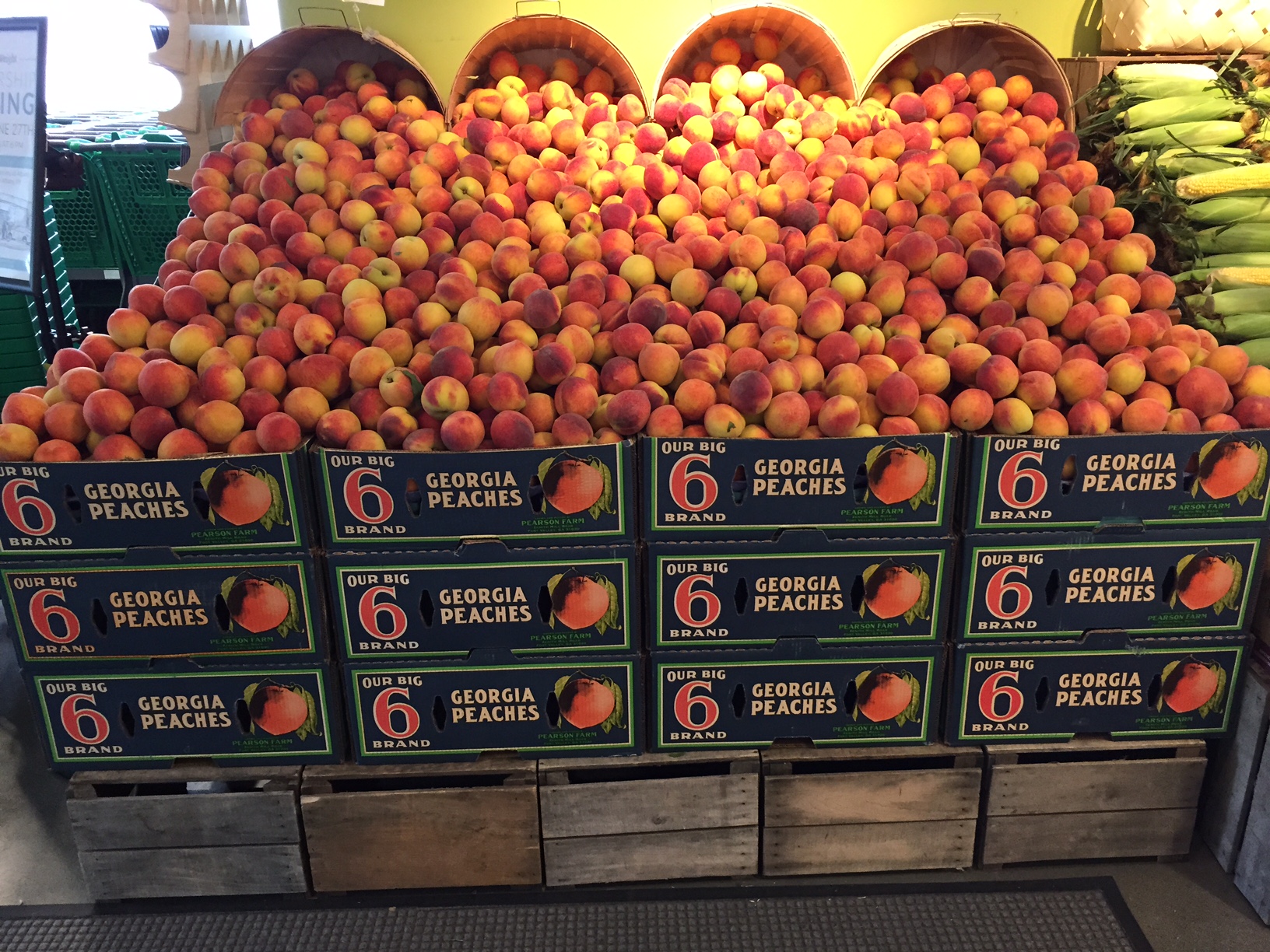
Using the smoke-and-mirrors process here is the key to a visually appealing and profitable display. Limited product out on display plus a full look is good math for stone fruit success.
Utilize the pads that many shippers provide in the boxes as a base to protect the bottom layer of product. These can also be found in apple boxes.
It is important to hit your culls often and rotate at each packout. As with storage, packout of product should not follow the FIFO rule, but rather you should rotate based on ripeness of the fruit.
Keeping your display culled and fresh will help in avoid customers walking into a swarm of fruit flies. Remember: a fresh, clean display will keep the fruit flies away!
Plum procurement
When working with the stone fruit category, keeping great notes on inventory and being super sharp with ordering fruit becomes very important to minimizing shrink. Peaches aren't like apple or oranges in the sense of long-term storage or display, so keeping a tighter inventory while not running out is key.
Success starts with the buy. Remember when I said above you either love stone fruit season or hate it? This is one of the reasons why.
Keeping that in-stock level, fresh appearance, full display and great variety on product that is continuously ripening in the backroom and on your counters is definitely like walking a tight rope at times.
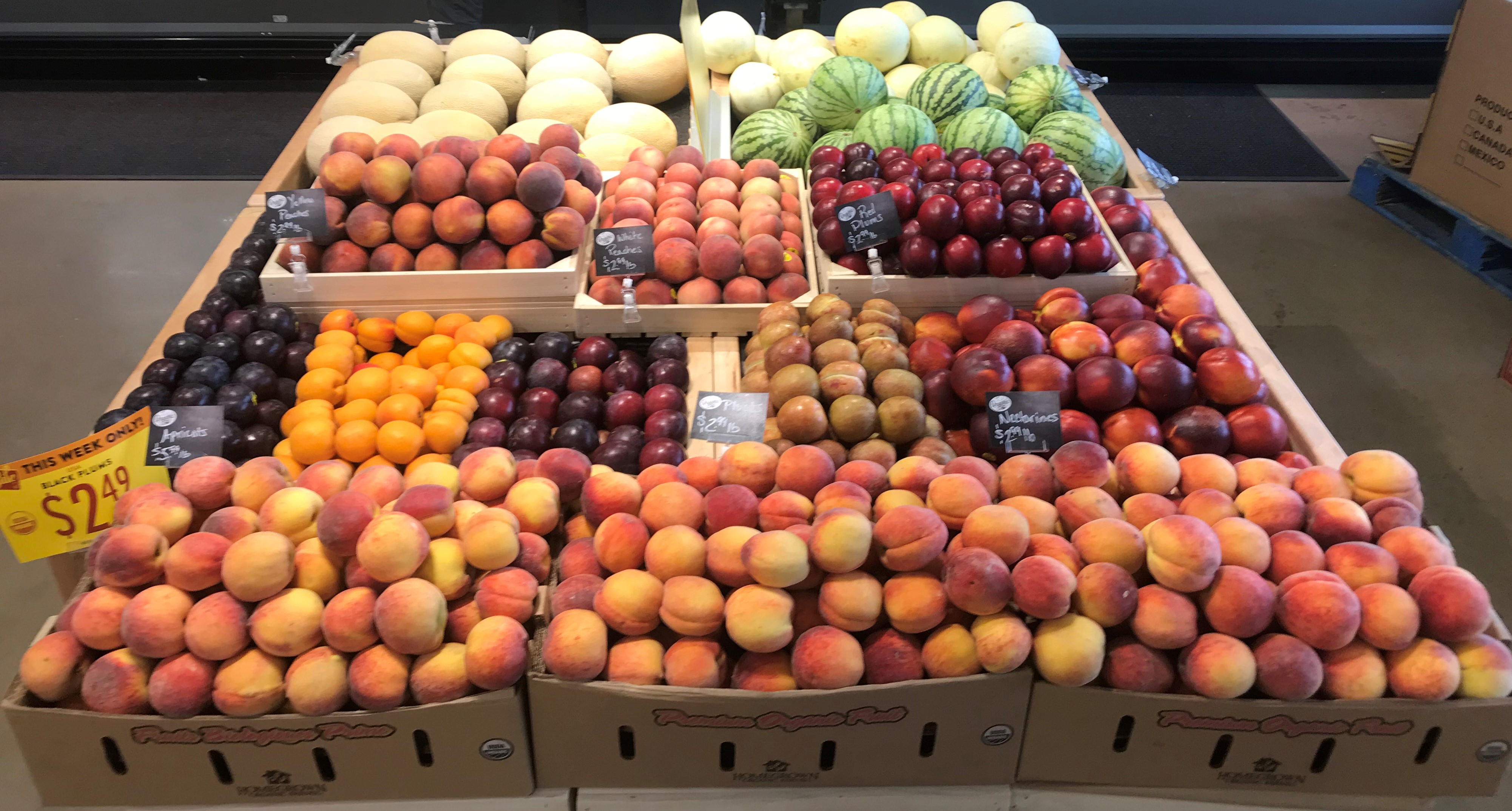
Variety is the spice of stone fruit life
When the season is in full swing, I encourage stores to carry a full array of stone fruit, as there truly is a fruit for everyone's taste. Yellow-flesh peaches and nectarines, white-flesh peaches and nectarines, donut peaches, apricots, red and black plums, apriums and – my personal favorite – pluots.
With variety names such as Dinosaur Egg, Flavor Grenade, Eagle Egg, Plumogranate and many more, the names themselves are a draw to customers.
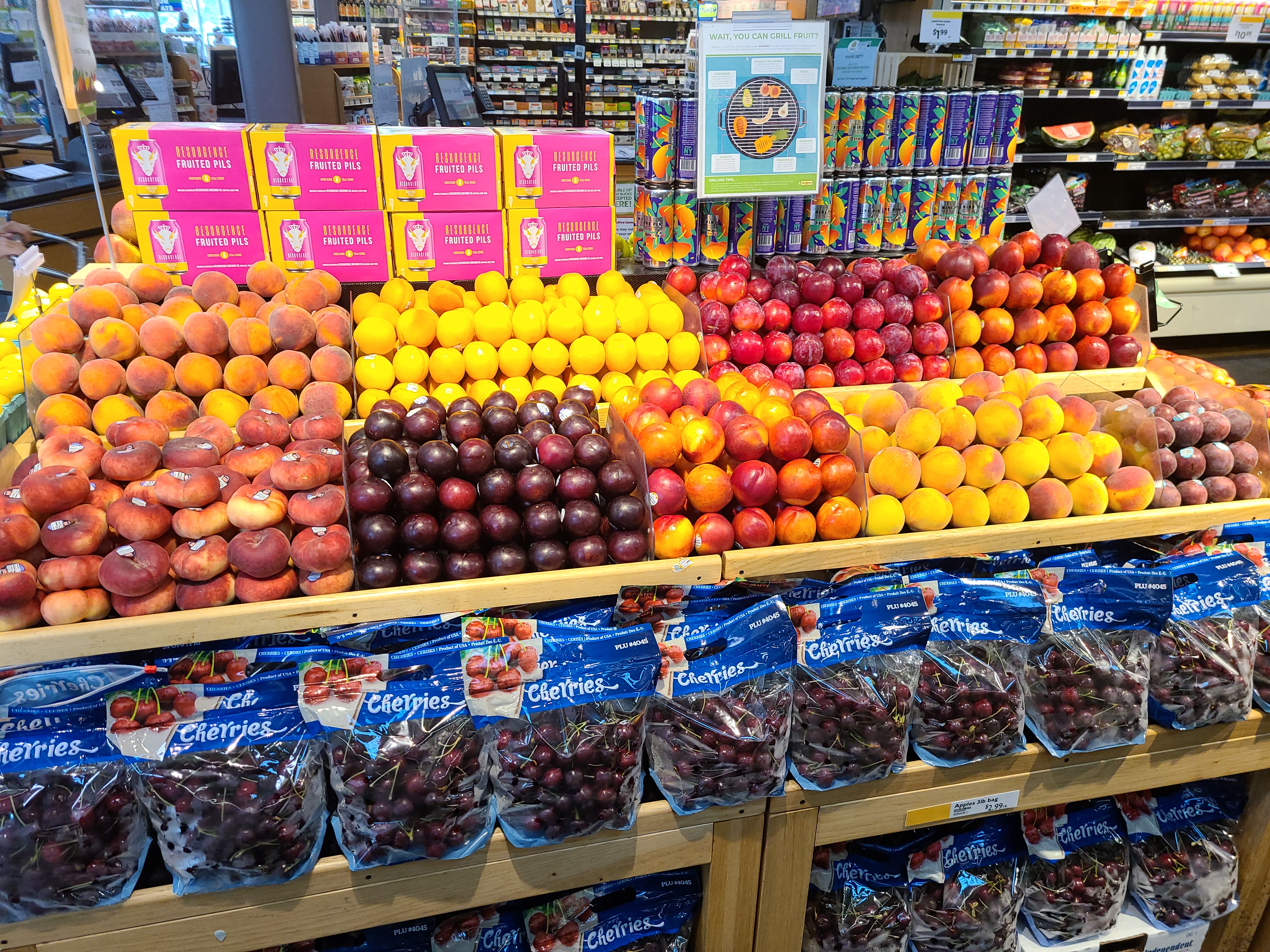
Pre=COVID, this was a great (and easy) category to sample and get consumers to try new things. Again, while COVID has eliminated for the time being the sampling process in stores, there is still something to be said for having an awesome spread of stone fruit available.
While shoppers might not get to taste something new, the opportunity to gain extra sales by having additional varieties present is there.
Nectarine nuggets
To finish up, here are five more quick notes on a few stone fruit best practices that will help you make the most out of your displays and capture all potential sales.
Signage — Be sure to have clear signage on your varieties. Having some product information or flavor profiles is also very helpful.
Options – Whenever possible, offer both ripe and unripe fruit. While a customer might walk in for a quick plum or peach for snacking now, they might also want to grab a bag for eating later in the week.
Cross-merchandise – Build the basket! Some great tie-in suggestions for stone fruit would be cinnamon (for cinnamon grilled peaches), honey, flour and bread (for cobbler—yum!), mangoes, red onions and pineapples (for salsa) and sugar and pie crusts.
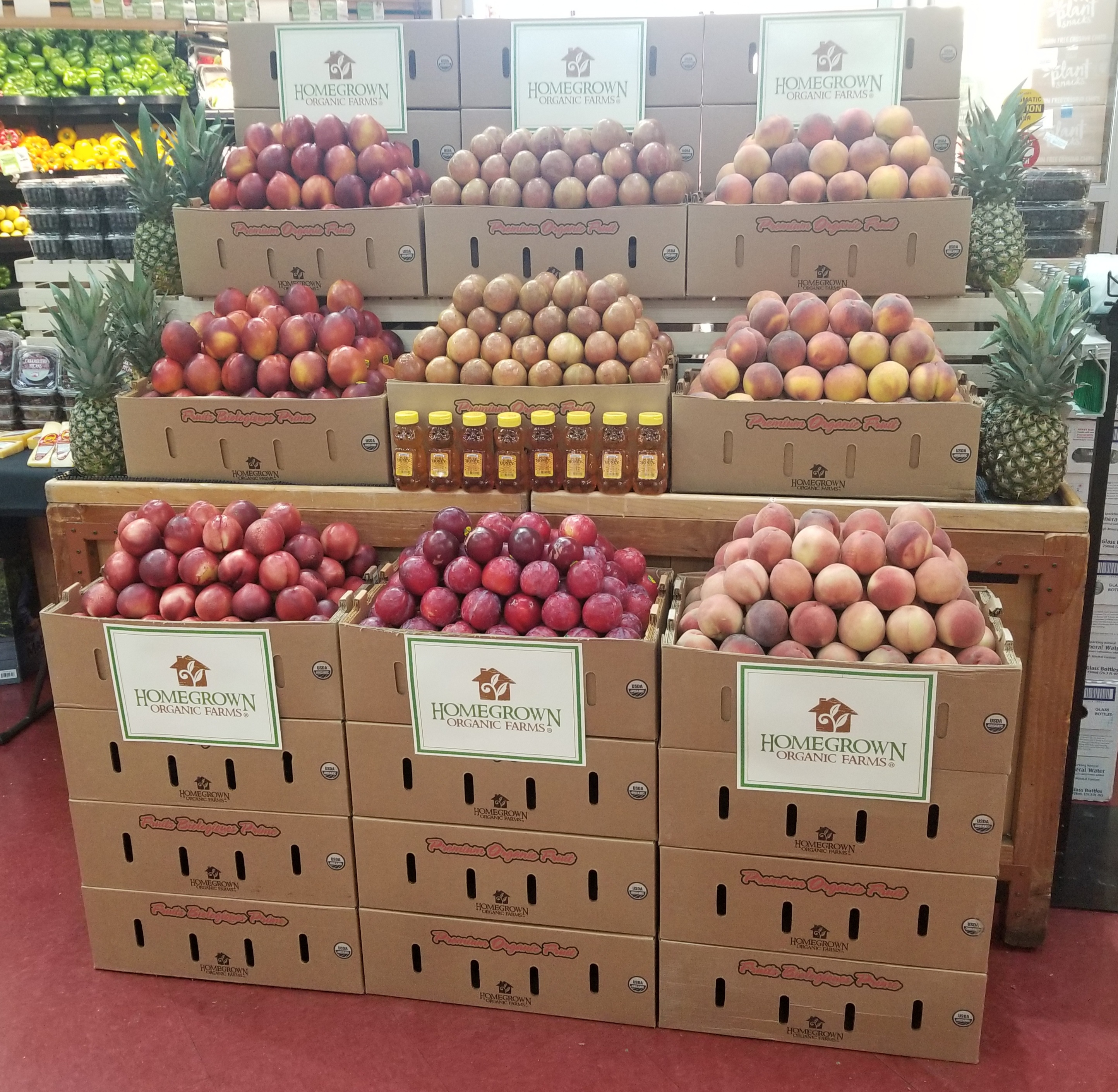
Recipe cards – Give your shoppers ideas for the many different uses for stone fruit. From cobbler to pies to fried nectarines (yes, that is a thing), there are a myriad of ways to enjoy stone fruit.
Final touches – Paper bags and even a few napkins by your displays are nice touches as well. Having a sign on your counters talking about the simple brown-bag ripening process is also useful for shoppers.
That is a wrap for this week's Retail Detail. Stone fruit success is now at your fingertips – “peachy” foundations for great stone fruit season!
Brian Dey is the senior merchandiser and natural stores coordinator for Ephrata, Pa.-based wholesaler Four Seasons Produce. He's an industry veteran with a serious passion for helping produce teams to achieve great presentation and results in their departments.

